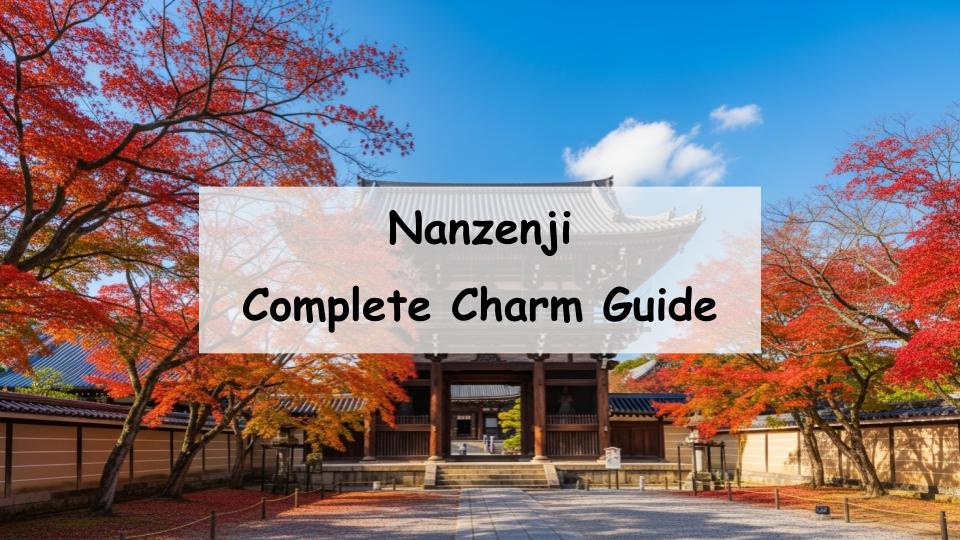Are you interested in visiting Nanzen-ji Temple in Kyoto but unsure about its main attractions or how to access it? This article thoroughly explores the appeal of Nanzen-ji, detailing its historical features, must-see spots, and convenient ways to get there. Whether you are a first-time visitor or a seasoned traveler, this guide covers essential information and nearby recommendations to help you enjoy your visit with ease.
History and Features of Nanzen-ji Temple
Founding and Historical Background of Nanzen-ji
Nanzen-ji Temple was established in 1291 and serves as the head temple of the Nanzen-ji branch of the Rinzai sect of Zen Buddhism. It was originally founded during the Kamakura period amid political shifts and enjoyed protection from the warrior class, contributing to its growth. Despite suffering from fires and conflicts over the centuries, Nanzen-ji has maintained its role as a cultural and religious hub in Kyoto. Many historic buildings and cultural properties still preserve the temple’s original charm, allowing visitors to feel the deep historical atmosphere.
Architectural Style and Cultural Assets
Nanzen-ji is renowned for its Zen architectural style, exemplified by the famous Sanmon Gate, considered one of Japan’s three great gates. This massive structure features intricate carvings and detailed decorations. The temple grounds also include important cultural assets like the Hojo (Abbot’s Quarters) and the Ryomon Garden, showcasing traditional Japanese garden aesthetics that harmonize with the architecture. These cultural treasures embody the Zen spirit and provide a tranquil environment for visitors.
Seasonal Appeal of Nanzen-ji
Nanzen-ji changes beautifully with the seasons, offering stunning cherry blossoms in spring, vibrant green foliage in summer, fiery autumn leaves, and serene snow-covered scenes in winter. Autumn, in particular, draws many visitors due to its breathtaking fall colors that paint the temple grounds. The seasonal transformations create a striking contrast with the historic buildings and enrich the visitor experience throughout the year.
Guide to Nanzen-ji’s Must-See Spots
Sanmon Gate: Highlights and Climbing Experience
The Sanmon Gate, a symbol of Nanzen-ji, stands 22 meters tall and offers visitors the opportunity to climb inside. From the top, you can enjoy panoramic views of Kyoto city, a breathtaking sight that leaves a lasting impression. Inside, the second floor showcases exquisite carvings and historical decorations, allowing visitors to appreciate the architectural artistry up close.
Suirokaku Aqueduct: A Scenic Spot
Within the temple grounds is the Suirokaku Aqueduct, a Western-style brick bridge constructed in the Meiji era. This unique structure contrasts beautifully with the traditional temple environment and is a popular spot for photography. Surrounded by nature, especially in the fresh green season, the aqueduct provides a charming and atmospheric scene.
Gardens and Important Cultural Properties
The gardens of Nanzen-ji reflect Zen philosophy, offering peaceful spaces designed to calm the mind. The Hojo Garden features carefully arranged rocks and moss, exemplifying the dry landscape garden style. Designated as important cultural properties, these gardens convey the beauty and history of Japanese garden art to all who visit.
Recommended Walking Spots Nearby
The area around Nanzen-ji includes famous destinations like the Philosopher’s Path and Eikando Temple, making it an excellent route for a leisurely stroll. Walking through these natural surroundings while exploring historic sites allows visitors to fully experience Kyoto’s rich cultural heritage.
How to Access Nanzen-ji Temple
Access by Train and Bus
The easiest way to reach Nanzen-ji is via the Kyoto Municipal Subway Tozai Line, getting off at Keage Station and walking about 10 minutes. City buses also serve the area, with the “Nanzenji Eikando-michi” stop nearby, offering convenient access from other tourist locations. Using public transportation helps avoid traffic and parking difficulties, especially during busy periods.
Walking Routes and Parking Information
From Keage Station or nearby bus stops, well-maintained walking paths lead visitors directly to the temple, providing a pleasant approach. For those arriving by car, several coin-operated parking lots are available around the area, but they tend to fill up quickly during peak seasons. Therefore, using public transit is recommended for a hassle-free visit.
Crowds and How to Avoid Them
Nanzen-ji attracts large crowds, especially during spring cherry blossom season and autumn foliage peak times. To enjoy a more peaceful visit, consider arriving early in the morning or on weekdays. Checking the temple’s opening hours and planning your itinerary accordingly can help you avoid the busiest times.
Food and Souvenirs Around Nanzen-ji
Popular Cafés and Dining Spots
The area around Nanzen-ji offers a variety of cafes and restaurants with a relaxed atmosphere. Visitors can enjoy traditional Kyoto cuisine, including local specialties like yudofu (tofu hot pot) and matcha sweets, perfect for a break during temple visits. These spots provide an authentic taste of Kyoto’s culinary culture.
Recommended Souvenir Shops
Several shops near the temple sell traditional crafts and local products, making it easy to find meaningful souvenirs. From handmade goods to Kyoto specialty foods, these stores offer unique items that make perfect gifts or keepsakes from your visit to Nanzen-ji.
Tips and Important Information for Visiting Nanzen-ji
Visiting Hours and Admission Fees
Nanzen-ji is generally open from 8 a.m. to 5 p.m., though hours may vary depending on the season. Admission fees apply for certain parts of the temple grounds, with different rates for adults and children. Checking the official website ahead of your visit ensures you have the most current information.
Dress Code and Etiquette
As a sacred religious site, visitors to Nanzen-ji should behave respectfully and quietly. Comfortable walking shoes are recommended due to the temple’s extensive grounds. It is also important to follow photography rules and to respect the natural and cultural environment by not littering or entering restricted areas. Observing these guidelines helps preserve the temple’s serene atmosphere for everyone.








Comment